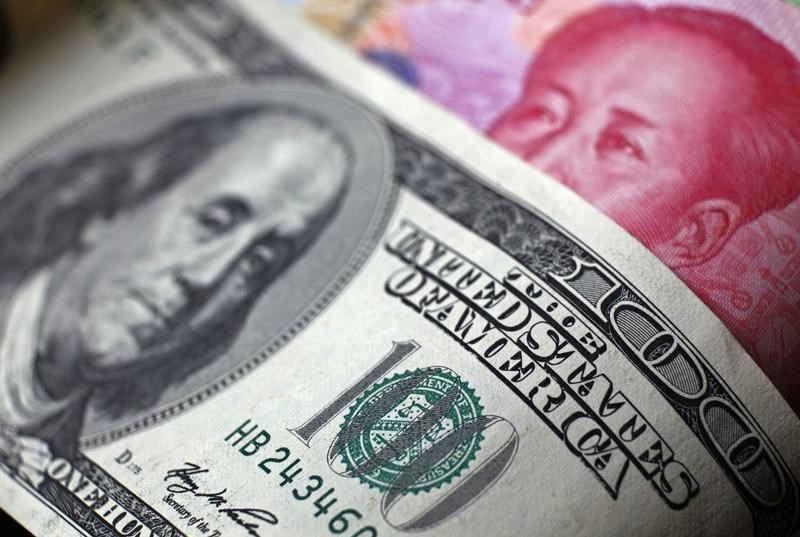Investing.com -- Most Asian currencies retreated on Thursday as softer-than-expected Chinese data raised more concerns over slowing growth in the region’s largest economy, while the dollar was flat following a mixed consumer inflation reading.
The Chinese yuan fell to a two-month low after data showed Chinese consumer inflation barely grew in April, while producer inflation sank to its weakest level since the peak of the COVID-19 pandemic in 2020.
Thursday’s reading, coupled with disappointing trade data earlier this week, showed that economic activity in China was struggling to pick up despite stimulus measures and a post-COVID reopening.
This trend bodes poorly for other Asian currencies that have high trade exposure to China, as an economic recovery in the country cools. The South Korean won fell 0.4% after the reading, while the Taiwan dollar lost 0.2%.
The Japanese yen was flat on Thursday after rising sharply in overnight trade after a mixed reading on U.S. consumer inflation data.
This saw the dollar lose some ground in overnight trade, although the greenback was largely flat on Thursday amid uncertainty over the path of U.S. monetary policy.
The dollar index and dollar index futures moved less than 0.1% in either direction.
U.S. consumer price index data showed that inflation eased slightly in April, but still remained well above the Federal Reserve’s target range. But inflation continued to increase on a monthly basis, showing that U.S. interest rates were likely to remain higher for longer.
While markets are widely betting that the Fed is done with its rate hike cycle this year, Fed Fund futures prices showed that markets trimmed their expectations for a rate cut this year, following the CPI data.
Higher U.S. interest rates bode poorly for Asian currencies, as the gap between risky and low-risk yields narrows. This trend battered Asian currencies through 2022, and is likely to limit a recovery this year.
But a few Asian units still saw some support on Thursday. The Australian dollar rose slightly, amid continued expectations of more interest rate hikes by the Reserve Bank. Relative strength in the jobs market gives the RBA enough headroom to keep raising rates, as it battles runaway inflation.
The Philippine peso was also supported by better-than-expected GDP figures for the first quarter of 2023, indicating that high inflation and interest rates had a limited impact on economic growth.
